telescope
Latest

NASA fixes Hubble gyroscope by turning it off and on again
Hubble's designers prepared for gyroscope failure by equipping the observatory with a backup. Unfortunately, when one of Hubble's gyroscopes conked out in early October, the backup didn't work as expected -- it was rotating too fast and hence won't be able to hold the telescope in place when it needs to stay still and lock in on a target. NASA has since been able to reduce its rotation rates and fix its issues by implementing an age-old fix for malfunctioning electronics: turning it off and on again.
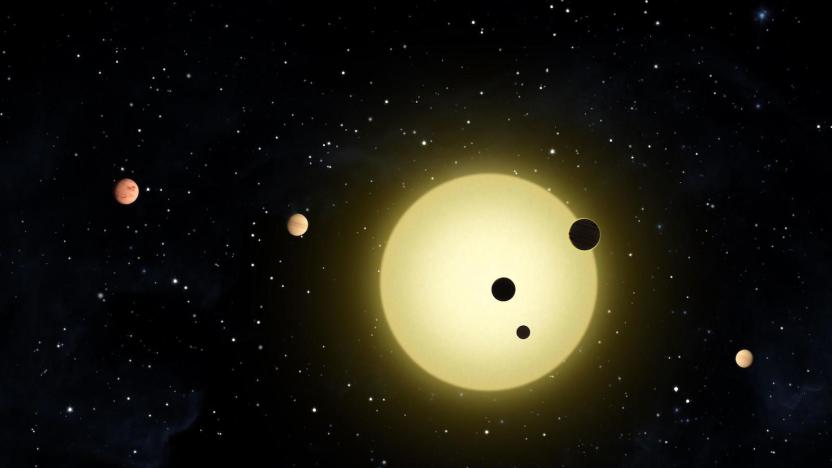
NASA put Kepler back to sleep in hopes it will send data again
Kepler has been running low on fuel for some time, so much so that NASA even put the spacecraft into a sleep mode in July in order to make sure it had enough fuel to transmit data back to Earth. But the planet-hunter has kept chugging -- it even kicked off a new data collection campaign in August. However, Kepler has run into another snag, and NASA has decided to put it back to sleep for the time being.

The ESA teamed with Nissan to build an off-road astronomy lab
Nissan unveiled its Navara Dark Sky concept vehicle at the Hannover Motor Show this week, and it's a vehicle designed for astronomers. The truck is an enhanced version of the automaker's Navara vehicle and along with including some handy new features, it also has a trailer in tow that carries a powerful PlaneWave telescope. Designed with the European Space Agency, the trailer not only houses the telescope but has a number of features that protect the telescope and help researchers collect and transmit data.

Planet-hunting Kepler telescope declares that it is not, in fact, dead
At this point, most space enthusiasts and insiders have said their goodbyes to the Kepler spacecraft. We've known for months that it's very low on fuel, and its planet-hunting replacement, TESS, has already launched. But Kepler has a mind of its own, apparently. Despite the fact that its level of fuel is now crippling, and it's had its share of mechanical issues, the telescope is once again back to work collecting scientific data and looking for new exoplanets.
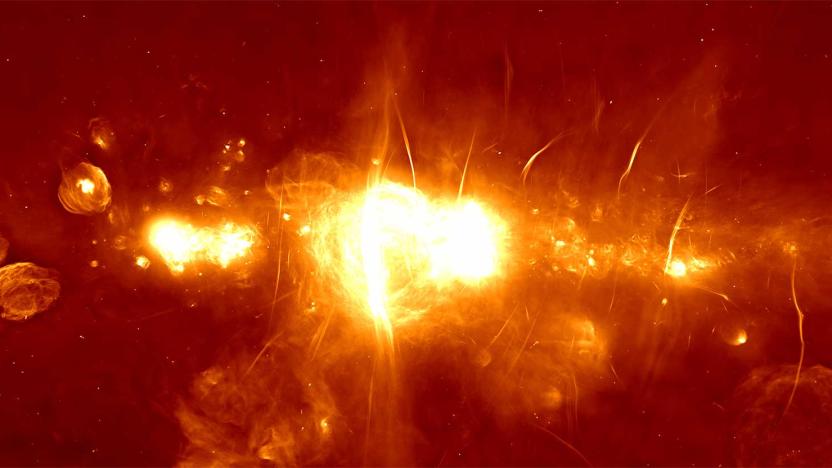
Ultra-sensitive radio telescope debuts in South Africa
Another piece of the Square Kilometer Array's puzzle just fell into place. South Africa has officially switched on MeerKAT, billed as the most sensitive radio telescope of its type on the planet. Some parts of the array have been gathering data, but it's now nearly ready to use interferometry from all 64 dishes to map the normally invisible portions of space in exceptionally high detail. It should be completely ready for scientific experiments in about two months, according to Nature. However, you won't have to wait that long to see fresh results -- you're looking at some above.
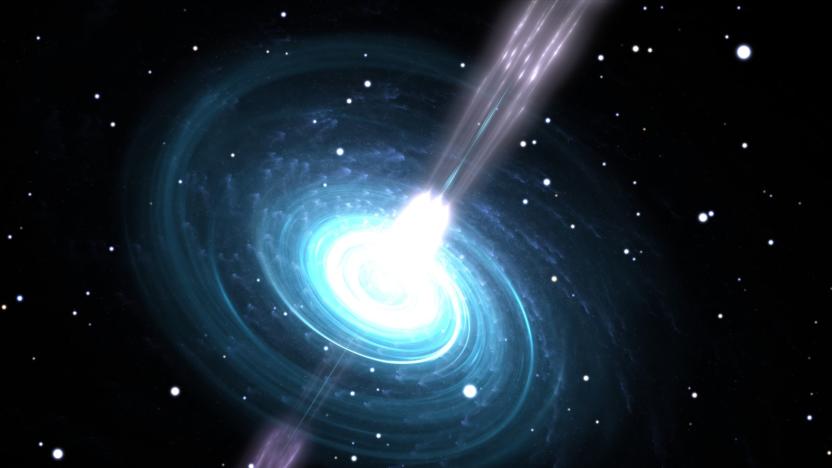
Radio telescopes show theory of gravity holds in extreme situations
Radio telescopes have been crucial to some significant discoveries regarding the nature of the universe. Now, though, they're verifying the basic rules of the cosmos. An international group of astronomers has shown that Einstein's theory of gravity holds up even in more extreme situations. The team spent six years using a trio of radio telescopes (Arecibo, Green Bank and Westerbork Synthesis) to track an unusual three-star system with a pulsar bracketed by two white dwarfs -- a textbook example of extreme gravity in action. How that pulsar moved would determine whether or not Einstein's concept passed muster.
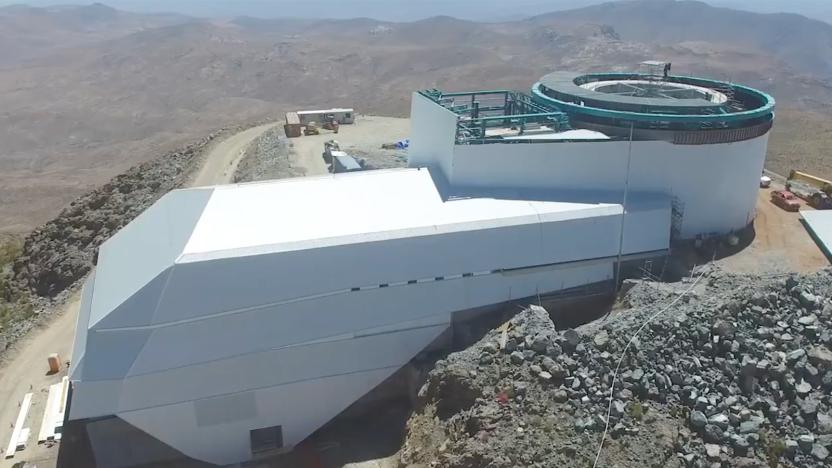
Video offers peek at ultra-wide Large Synoptic Survey Telescope
The Large Synoptic Survey Telescope has been a long time in the making when work on its mirrors started in 2007. It's finally coming together, though. The LSST team has released a brief clip showing progress on the Chilean facility as of the end of 2017. Not surprisingly, it's huge -- that giant 3.2-gigapixel camera (potentially the largest in the world) and ultra-wide optics (3.5 degrees in diameter) take up a lot of space by themselves, let alone the rest of the complex.
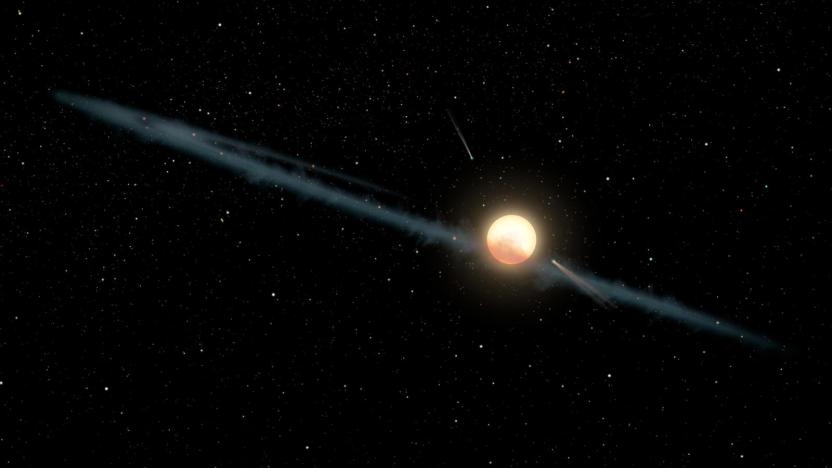
Researchers say aliens aren't causing Tabby’s Star to dim after all
Tabby's Star, also known as KIC 8462852, is quite a mystery. Located about 1,280 light-years from Earth, the star puts on an interesting light show every now and then, dimming and brightening at unpredictable times. While many theories have been put forward as to what could be causing the changes in brightness, -- which can dip by up to 22 percent -- theories that include an alien megastructure, researchers haven't been able to get any solid data to explain the phenomenon. However, Louisiana State University researcher Tabetha Boyajian, who the star is named after, launched a Kickstarter campaign in May of 2016 with the goal of raising funds for a long-term observation of the star. The funds were raised and a new paper published in the Astrophysical Journal Letters presents the work of over 200 researchers who observed the star from 2015 through last year.
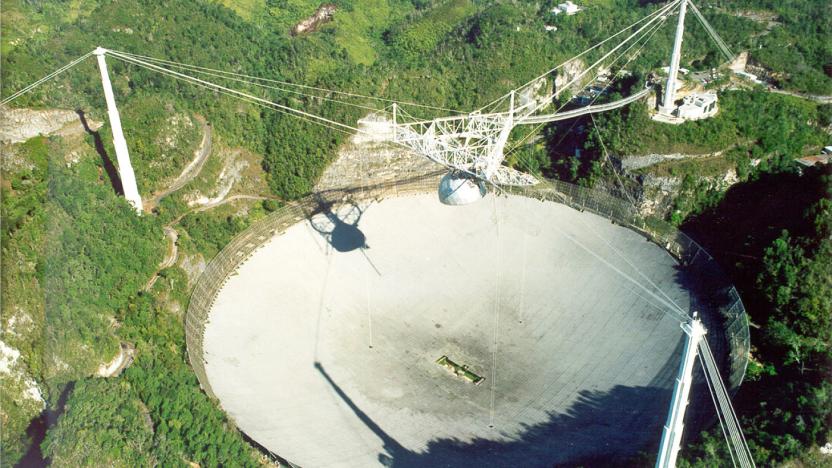
Arecibo is monitoring potentially hazardous near-earth asteroid
The iconic Arecibo radio telescope has faced quite a few challenges over the last ten years, including budget cuts, a funding crisis and damage from Hurricane Maria. While it may not be the largest radio telescope in the world anymore (that honor belongs to Russia's RATAN-600), Puerto Rico's device is still an important asset for detecting dangers to our planet. It's good news, then, that the telescope is up and running again to be able to check out near-Earth asteroid 3200 Phaethon.
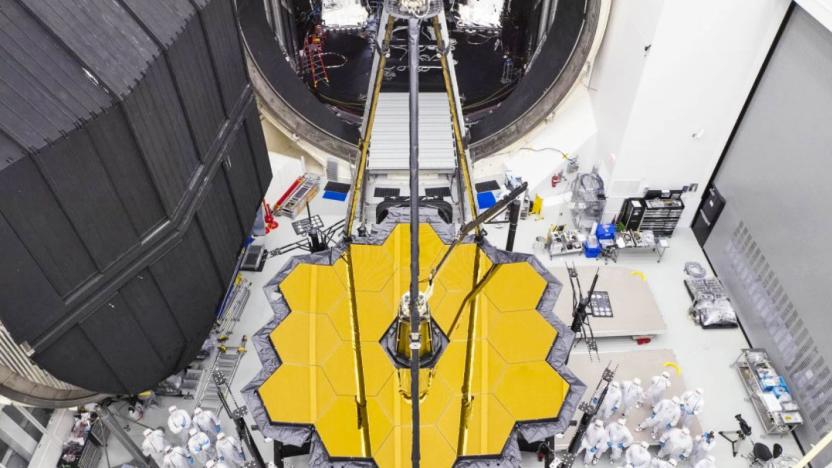
NASA's James Webb telescope is one step closer to launch
NASA's $8.8 billion James Webb Space Telescope (JWST) has just left the thermal vacuum chamber where it's spent more than three months being put through its paces in a series of hardcore cryogenic tests. Scientists wanted to make sure the telescope's instruments and optical element can function properly in the cold, airless conditions of space, and while NASA studies the results, engineers are busy putting JWST back together again, in preparation for its launch in spring 2019.

First observed interstellar object is a speedy, cigar-shaped asteroid
Last month, astronomers running the Pan-STARRS 1 telescope in Hawaii spotted an intriguing object moving through our solar system and it became clear pretty quickly that the object, whether it was a comet or an asteroid, had come from outside of our solar system. Now, in a paper published this week in the journal Nature, researchers have described the interstellar visitor, dubbed 'Oumuamua, including its peculiarities as well as its similarities to objects originating in our own solar system.

Astronomers just measured a whole lot more than gravitational waves
A couple of weeks ago, the LIGO (Laser Interferometer Gravitational-Wave Observatory) and Virgo teams announced the detection of another set of gravitational waves -- the fourth since LIGO's first detection in September of 2015. The observations of these ripples in spacetime are extraordinary in and of themselves, no matter how many times we record them. However, while the first three sets of gravitational waves recorded were by the two LIGO observatories, the fourth was also detected by a newly established third -- Virgo -- located in Italy. And having three detectors allows researchers to triangulate the source of those waves with extraordinary precision.
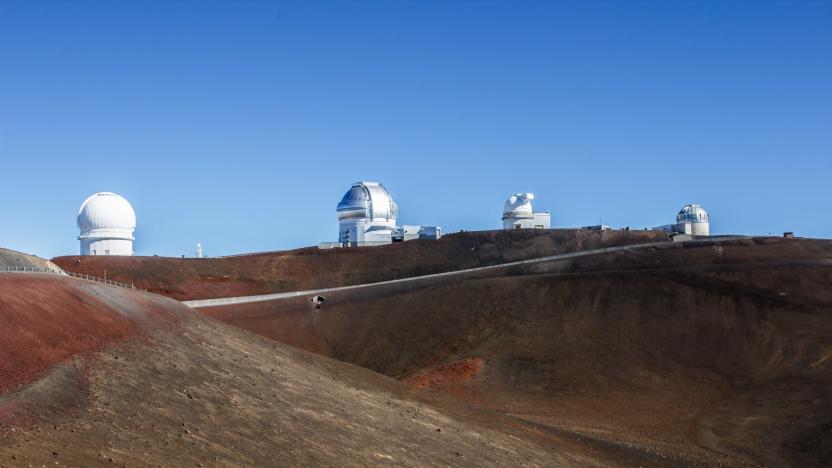
Long-delayed Thirty Meter Telescope gets the go-ahead, for now
Building the world's largest telescope has proven to be even more difficult than one might expect. The Thirty Meter Telescope, which has been planned for construction atop of Hawaii's Mauna Kea, has hit a number of snags, but it got a major approval this week. The state's land board granted the project construction approval in a 5-2 vote, but those that have challenged it from the beginning plan to keep fighting.

NASA pushes James Webb Space Telescope launch to Spring 2019
If you're counting down the days until NASA's Hubble replacement takes off, you'll have to count a bit longer. The James Webb Space Telescope was due to launch around a year from now. But, there seems to be (another) holdup. The aeronautics agency is blaming the delay on the remaining integration of spacecraft parts taking "longer than expected." As a result, the launch date is now being pushed to Spring 2019, specifically between March and June of that year. NASA assures that the rescheduled lift off is not due to any "hardware or technical performance concerns."
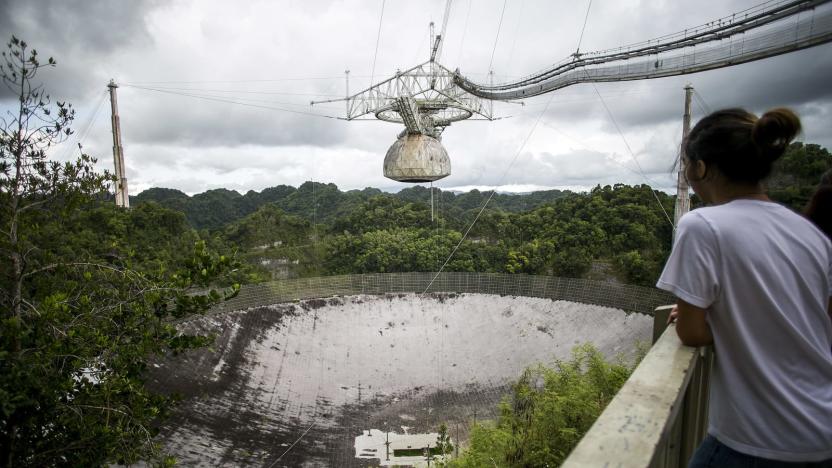
Hurricane Maria wreaks havoc on Arecibo radio telescope
Puerto Rico is suffering on an unimaginable scale in the wake of Hurricane Maria. Many have been displaced from their homes, and the entire territory may go without electricity and reliable communication for months. And while the human tragedy is clearly the most important concern, it's also having a terrible effect on the scientific community. Researchers have learned that the Arecibo Observatory and its signature radio telescope took significant damage when the hurricane passed over. All staff members are thankfully safe for now, but an atmospheric radar line feed and a 39-foot dish (used for Very Long Baseline Interferometry) were lost in winds that reached up to 155MPH. The gigantic central dish is intact, although the line feed's collapse punctured it in places.
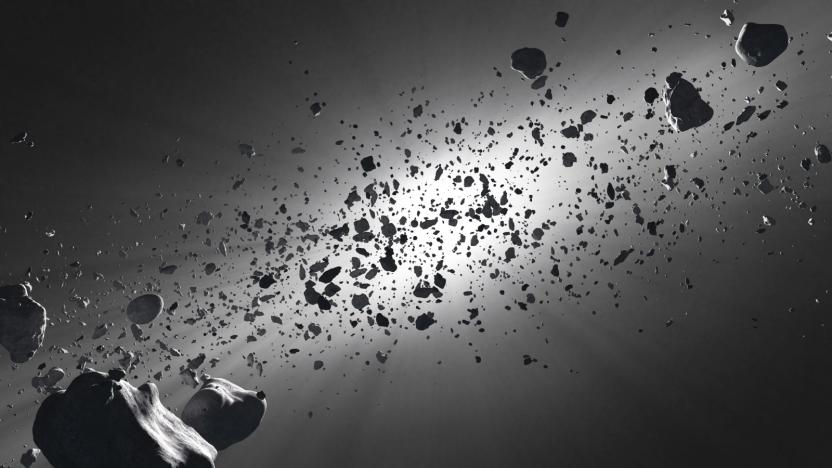
Scientists want to explore asteroids with a fleet of nanoprobes
Researchers at the Finnish Meteorological Institute (FMI) presented a mission plan today at the European Planetary Science Congress that would allow scientists to observe hundreds of asteroids over the course of just a few years. Their plan is to send 50 nanoprobes -- small space instruments -- into the asteroid belt that lies between Mars and Jupiter to take images and chemical measurements of around 300 large asteroids. "Asteroids are very diverse and, to date, we've only seen a small number at close range. To understand them better, we need to study a large number in situ. The only way to do this affordably is by using small spacecraft," FMI's Pekka Janhunen told Popular Mechanics.

Astronomers use AI to reduce analysis time from months to seconds
Gravitational lensing is when the image of a distant object in space -- like a galaxy, for example -- is distorted and multiplied by the gravity of a massive object, such as a galaxy cluster, lying in front of the smaller, faraway object. It's a useful phenomenon that has helped scientists discover exoplanets, understand galaxy evolution, spot a super bright galaxy, detect black holes and prove Einstein right. But analyzing images affected by gravitational lensing takes a really long time, requiring researchers to compare real images with simulated ones. Just one lensing effect can take weeks or months to analyze.
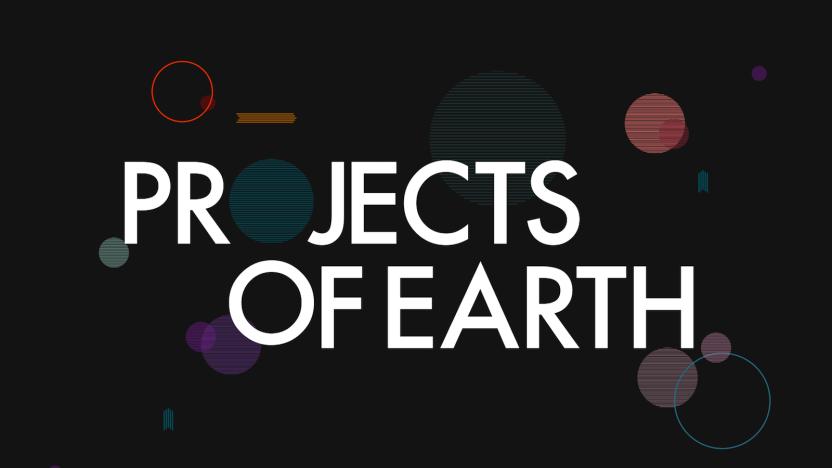
Kickstarter commemorates Voyager with projects celebrating humanity
Forty years ago, the two Voyager probes were launched and to honor the anniversary, Kickstarter has created Projects of Earth -- a group of campaigns inspired by the Voyager's Golden Record that offer "unique perspectives on humanity, culture and life on Earth." All of the projects will be launched between August 20th and September 5th -- the two dates of each of the Voyager probe launches -- and like the Golden Record, are meant to capture a portrait of our world as it exists today.

Solar eclipse gives NASA a rare opportunity to study Mercury
While you're stuck on Earth during today's solar eclipse, NASA jets will be performing a tricky science experiment on the Sun and its closest companion, Mercury. A pair of them will take off this morning from Houston's Johnson Space Center and follow the path of of the eclipse, allowing them to see "totality" for three and half minutes, nearly a minute longer than Earth observers. Equipped with a pair of infrared telescopes each, they'll examine the sun's corona and Mercury's chemical signatures to find out what lies below its surface.

Slooh’s stargazing telescope livestreams now free to view
If you enjoy watching nature livestreams (and let's face it, who hasn't put on a panda cam at least one or twice while toiling away), then you may love today's announcement. Slooh, an online astronomy community that has a network of telescopes, is now making virtual viewing free.







